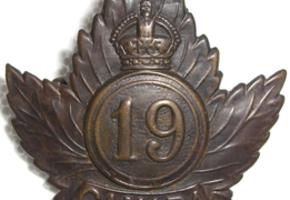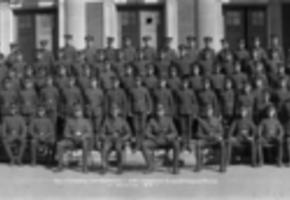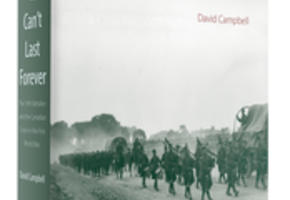
It Can't Last Forever
The 19th Battalion and the Canadian Corps in the First World War
Campbell, It Can't Last Forever
Description
The 19th Battalion was an infantry unit that fought in many of the deadliest battles of the First World War. Hailing from Hamilton, Toronto, and other communities in southern Ontario and beyond, its members were ordinary men facing extraordinary challenges at the Somme, Vimy Ridge, Passchendaele, Amiens, and other battlefields on Europe’s Western Front.
Through his examination of official records and personal accounts, the author presents vivid descriptions and assessments of the rigours of training, the strains of trench warfare, the horrors of battle, and the camaraderie of life behind the front lines. From mobilization in 1914 to the return home in 1919, Campbell reveals the unique experiences of the battalion’s officers and men and situates their service within the broader context of the battalion’s parent formations—the 4th Infantry Brigade and the 2nd Division of the Canadian Corps. Readers will gain a fuller appreciation of the internal dynamics of an infantry battalion and how it functioned within the larger picture of Canadian operations.
Reviews
Campbell set the bar at its highest in researching and writing this engaging book, making it easily one of the best CEF unit histories ever produced.
- Andrew B. Godefroy, CD, PhD, author of For Freedom and Honour and Great War Commands
Lieutenant R. O. Spreckley, a veteran and historian of the 19th Battalion, warned in the mid-1930s that he could not write an ‘intimate’ regimental history without knowing what the ‘boys did, thought, felt, smelt, and endured’ during the war. He was forced to abandon the history. It has taken eighty years, but David Campbell has picked up the torch to write a rigorously scholarly and eminently readable history of the 19th Battalion. He captures the strain and struggle of a battalion at war, linking it to the wider war effort but always reminding the reader of the crucial role of individual Canadians on the Western Front and behind the lines. It Can’t Last Forever is essential reading for those interested in the Canadian Corps and the Canadian soldiers who delivered victory in the many hard-fought battles and campaigns of the Great War.|Tim Cook, C.M
- Canadian War Museum
...a tragic and beautiful book
- Holly Doan, Blacklock's Reporter, 2017 December 1


